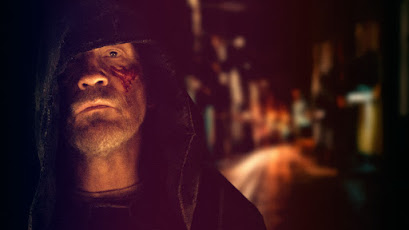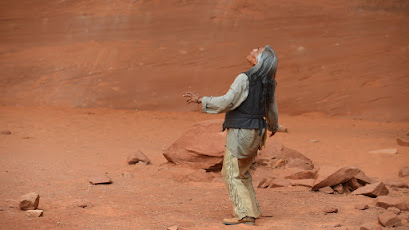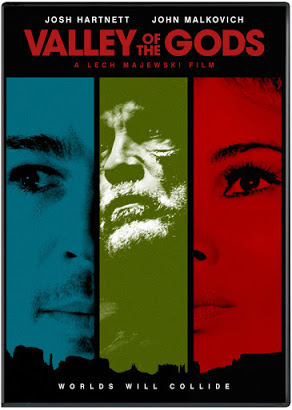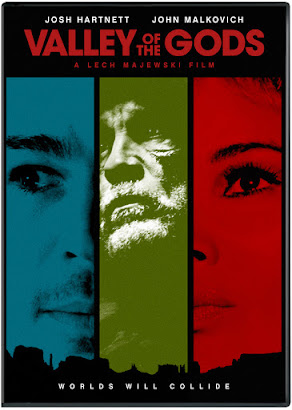Valley of the Gods contrasts abundance and poverty through three separate storylines, featuring a middle-class writer (Hartnett), an eccentric trillionaire (Malkovich), and a struggling Navajo community. Post-divorce, copywriter John Ecas (Hartnett) undertakes the biography of the richest man on earth, who is dead-set on mining sacred lands for uranium. When modern advance runs afoul of long-dormant guardians from ancient legend, even the most unimaginable wealth may soon meet its match.

The first thing that hits you about Valley of the Gods is the wonderful cinematography. The movie is set in the Valley of the Gods, Utah, and that comes with some striking images of natural beauty. The nature scenes are just stunning and you will be in awe of just how wonderful they look. The scenes look very impressive at day or at night, and there is just some stunning shot choice. This corresponds to some of the imagery shown in the film. There is a scene early on where a bunch of perfectly manicured suburban houses are show right after this majestic nature view. Some of the central themes really sink in and it is wonderful to see. The next thing that you will notice is that this movie has some phenomenal acting. It was great to see Josh Hartnett back on the big screen, and his conflicted, tragic, but personable character was a main draw of the film. He really is the heart of this film as he struggles to write while dealing with plenty of personal issues. John Malkovich is amazing, as usual, and his eccentric billionaire character is interesting. Bérénice Marlohe is another tragic character we get to meet; she has some powerful scenes, but she is in the movie far too briefly.
However, Valley of the Gods will not be for everyone. The story of the film is told from three main storylines, the eccentric trillionaire, the tortured writer, and the Navajo people. These stories weave in and out and aren’t necessarily distinct. You can have characters meet, some scenes happen out of time, and some scenes will play out with little context. Particularly, there seemed to be a decent amount of Native American lore worked into the movie, but not much is given to the viewer if they are unfamiliar. So it can lead to some scenes being tough to follow or just looking out of place. Additionally, director Lech Majewski has a lot of similarities with David Lynch, including a focus on lore and nature, very quirky exaggerated characters, some odd human movements and obsessions, imagery that is built into his movie, and a lack of explanation in some of the scenes. These aspects will be hit or miss for people and does make the story tough to follow unless you really appreciate that kind of story telling. And some of these stylistic choices cause some of the lines to feel forced and some of the characters to just be off putting. But, if you appreciate the film for what it shows and says, then Valley of the Gods has a lot to like.
Valley of the Gods will not be for everyone and some of the amazing positives are contrasted with some quirks and off putting choices. However, the central message of this film is about contrast: rich vs. poor, tradition vs. progress, nature vs. urban life, so perhaps this is simply another grand contrast in the film. Valley of the Gods has some beautiful cinematography, fantastic use of lighting, quirky characters, and a David Lynchian feel in this complicated story about nature and tradition.
Rent it.

This site contains affiliate links. //Commerce or this site may be compensated when you click through links on our site.






